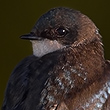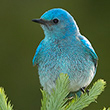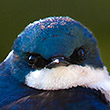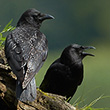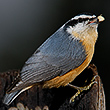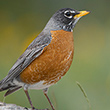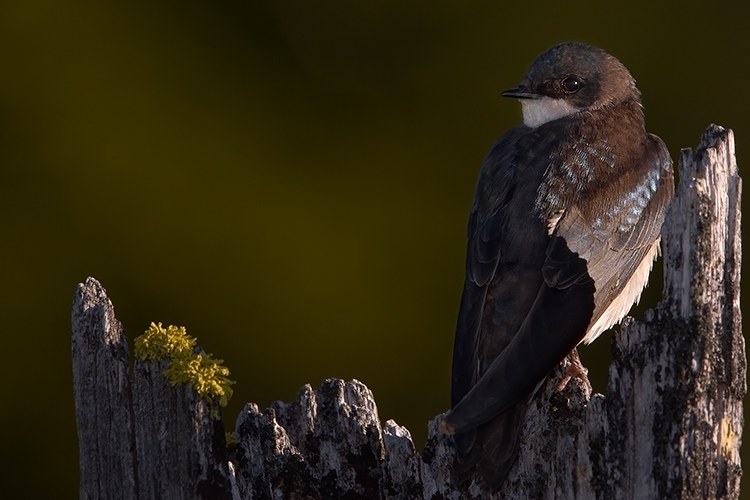
In the Field
Female Tree Swallow: Subtleties. Findlay Creek, BC, Canada. May 26, 2005.
This is the type of scene that makes me glad I'm shooting digitally these days. I had been photographing a male Tree Swallow when this female flew in quite closely and struck this pose. The sun had just risen above the horizon and the lighting on the bird was dramatic, but extremely contrasty. I was lucky in that I had my camera set up pretty much perfectly to capture the image - I had the correct lens on, my flash (to fill shadows) was mounted and ready to fire, and I was sure of the correct exposure needed to avoid blowing out the highlights. Even so, the image needed a significant amount of digital correction before it mimicked what I had observed in the field (and I could never have reproduced the scene anywhere near this accurately with film!).
As a final note, I'm increasingly finding myself photographing the more subtle members of the animal kingdom - with songbirds this often means the females of the species. I think this is partly because I'm shooting digitally and can, in many cases, extend both the brightness (or "dynamic") range and the tonal range of the image compared to when I'm shooting film. This isn't too important if you're shooting dramatically coloured individuals, but can be important in showing all the tones of those more subtly coloured females.
Behind the Camera
Female Tree Swallow: Subtleties. Findlay Creek, BC, Canada. May 26, 2005.
Digital Capture; Compressed RAW (NEF) format; ISO 100.
Nikon D2X with Nikon 200-400 mm f/4G ED-IF AF-S VR lens @ 400 mm (600 mm equivalent with digital conversion factor) supported on Gitzo 1348 carbon fibre tripod with Wimberley head; SB-800 flash (fill) with Better Beamer Flash Extender mounted on Really Right Stuff flash bracket. VR turned to "On" and in "Normal" mode
1/200s @ f8; -1.67 stop compensation from matrix-metered exposure setting; balanced i-TTL flash exposure with -0.67 stop compensation on SB-800.
At the Computer
Female Tree Swallow: Subtleties. Findlay Creek, BC, Canada. May 26, 2005.
RAW Conversion to 16-bit TIFF, including first-pass sharpening, exposure compensation, and tone curve adjustment, using Phase One's C1 Pro. Multiple RAW conversions (3 at different exposure settings) to extend dynamic range of captured image, in this case primarily to restore shadow detail on the left side of the bird, including in it's throat region and to retrieve highlight detail on the sunlit side of the bird (particularly the white feathers on the bird's lower flank).
All further digital correction on 16-bit TIFF file using Adobe's Photoshop CS, including compositing and masking of various exposure versions, selective saturation enhancement, and selective sharpening for web output.
Conservation
Female Tree Swallow: Subtleties. Findlay Creek, BC, Canada. May 26, 2005.
Ten percent of the revenue generated by this image will be donated to Wildsight.
Species Status in Canada*: This species is not designated as at risk.
The Tree Swallow (Tacycineta bicolor) is a common insect-eating aerobatic specialist found across much of North America. Tree Swallows nest in abandoned cavities in trees or in nest boxes provided for them by humans. The breeding range of the Tree Swallow is expanding southward and overall their populations appear to be increasing.
This female Tree Swallow was photographed in the Columbia Valley of the East Kootenays. While this species is not considered at risk in any way, many ecosystems within the Columbia Valley face development pressure. Wildsight is an effective conservation organization that protects biodiversity and promotes sustainable communities in Canada's Columbia and Rocky Mountains. Support for Wildsight, through donation or becoming a member, will help ensure that they remain effective in their efforts to conserve threatened or endangered species and ecosystems.
*as determined by COSEWIC: The Committee on the Status of Endangered Wildlife in Canada



















